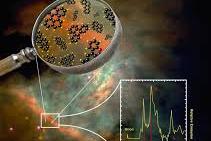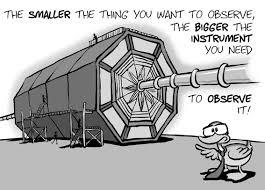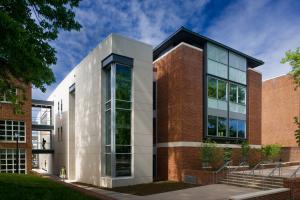Laboratory for Astrophysics and Surface Physics (LASP-UVa)
Advancing fundamental understanding of the interaction of energetic particles (ions, electrons and photons) with solid surfaces, with an emphasis on the physical and chemical processes at play in our solar system and the interstellar medium.
Current Research
-
Lunar Investigations: Surface & Exosphere
Maximizing the science derived from samples returned by the Apollo Program and lunar analog materials in preparation for future Artemis missions to the Moon.
-
Asteroid Origins & Evolution
Investigating the physical and chemical effects of space weathering by solar-wind ions and micrometeorite bombardment through laboratory experiment and returned asteroid sample analysis.
-
Mercury: Space Weathering and Exosphere Production
Quantifying sputtering desorption yields for exospheric constituents from the rough Hermean regolith and investigating compositional, chemical and optical change in sulfur- and carbon-rich magnesium silicates.
-

Astrochemistry of the Icy Planets & ISM
Radiolysis and radiochemistry of condensed gas surfaces; measuring the binding energy of organic species to icy grains; & calculating the stability & chirality of magnesium nanosilicates
-

KEVION Ion Irradiation Facility for Planetary Science
An ion accelerator for transformative research in studies of space weathering, radiolysis, radiosynthesis, sputtering, surface charging, radiation damage, instrument development and sample characterization.
-

Diffusion in Regolith Grains
Understanding the motion of atoms and molecules across, into, and between surfaces of regolith grains aided by temperature or enhanced by solar-wind ion irradiation.
Recent Publications
Noah Jäggi and Catherine A. Dukes,"Magnesium sulfide powder analyzed by XPS," Surf. Sci. Spectra 32 (1): 014001 (2025) https://doi.org/10.1116/6.0004185
K.B. Stelmach, C.A. Dukes, and R.T. Garrod, "A Search for Chirality in Hydrogenated Magnesium Nanosilicates: A DFT and TD-DFT Investigation," Journal of Physical Chemistry A, 128, 18, 3475–3494, (2024) https://doi.org/10.1021/acs.jpca.3c06521
- D. Laczniak, M. Thompson, R. Christoffersen, C. Dukes, R. Morris, and L. Keller, “Investigating the role of incident ion flux in solar wind space weathering of carbon-rich asteroidal regolith via H+ and He+ irradiation of the Murchison meteorite" Icarus, Volume 410, 115883 (2024) https://doi.org/10.1016/j.icarus.2023.115883
Affliliations
LASP Archived Data Links
Miscellaneous
LASP Laboratory Memes .....
Equipment on the fritz? Confused about a result? Program not working? Science is hard. Memes are fun. Enjoy!




